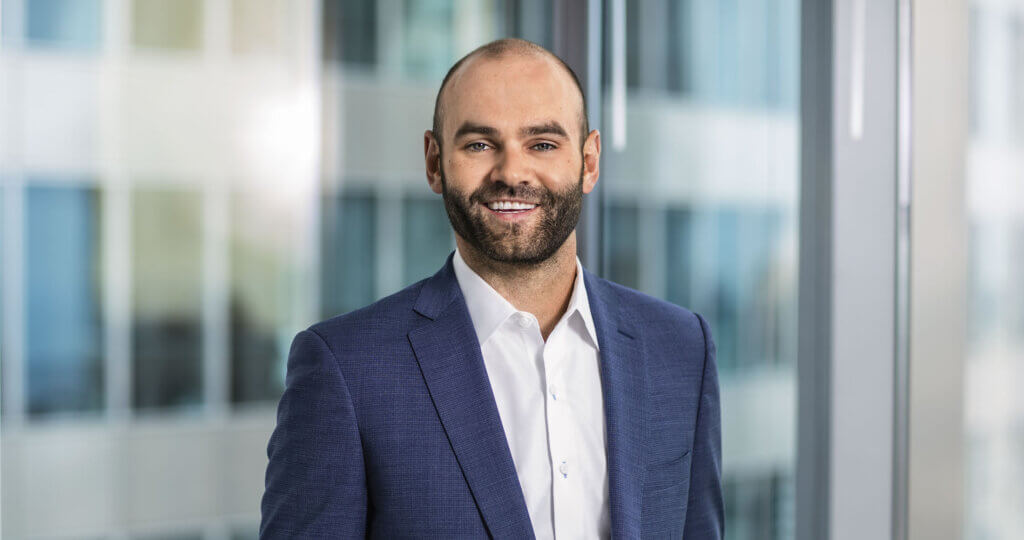Oakmark Equity and Income Fund - Investor Class
Average Annual Total Returns 09/30/11
Since Inception 11/01/95 10.17%
10-year 6.99%
5-year 3.52%
1-year -0.77%
3-month -12.80%
Gross Expense Ratio as of 09/30/10 was 0.79%
Past performance is no guarantee of future results. The performance data quoted represents past performance. Current performance may be lower or higher than the performance data quoted. The investment return and principal value vary so that an investor’s shares when redeemed may be worth more or less than the original cost. To obtain the most recent month-end performance data, view it here.
Quarter and Fiscal Year Review
Worldwide equity markets declined significantly in the quarter ended September 30, and the impact was significant on the Equity and Income Fund. The Fund’s nearly 13% loss lagged the 9% decline that Lipper reported for its Balanced Fund Index. In the fiscal year ended September 30, the Fund lost 1% while the Lipper Balanced Fund Index earned 1%. Although we do not have all of the data for the Lipper index, we believe that the Fund’s relative shortfall derived from four factors: A larger equity weighting than the typical balanced fund, greater exposure to highly volatile commodity producers than the competitive funds, more small- and mid-cap equities (which tend to underperform in volatile markets) and a fixed-income portfolio with a short duration during a period when long-term bonds dominated. On a positive note, the annualized compound rate of return since the Fund’s inception in 1995 is 10%, while the corresponding return to the Lipper Index is 6%.
Despite the disappointing results, the Fund benefited from takeover-related activity in the quarter. Goodrich produced by far the strongest contribution to return after United Technologies agreed to acquire the company at a substantial premium. No longer an automobile tire company, today Goodrich is best known for its landing gear for commercial aircraft. Amidst expectations that the airline industry will expand significantly, United Technologies spied an attractive growth opportunity in Goodrich. We thank Goodrich management for representing their shareholders’ interests effectively in this negotiation. We will have more to say about interest rates later in this report, but United Technologies’ management stated that the price for Goodrich was possible because of today’s extremely low financing costs.
Kinetic Concepts was the second holding to agree during the quarter to a takeover at a meaningful premium. Kinetic makes devices that help hospitals treat patients with difficult wounds. The company’s Lifecell unit developed an artificial skin that has attracted considerable interest. We wish the company well and thank the management team for their good stewardship of their shareholders’ capital. As it happened, we initiated the Fund’s Goodrich and Kinetic Concepts holdings in November 2008, illustrating that economically stressful times often produce the best opportunities.
While the two companies above have agreed to their acquisition, a third holding, Pharmerica, is contesting an offer from Omnicare, which itself is a Fund holding. Both companies are institutional pharmacies, meaning that they primarily provide pharmacy management services to long-term care facilities focused on the geriatric population. Although this industry is subject to the same cost pressures present throughout the health care industry, we believe this particular niche to be quite attractive when it is effectively managed. We find Omnicare’s new management team to be impressive and estimate that the combination with Pharmerica would offer considerable scale economies. Nevertheless, many factors could thwart this merger’s completion. As value investors, we are pleased to hear about acquisition offers for companies in which we have invested. These acquisition valuations also become important data that help us understand what other businesses may be worth.
Aside from Goodrich, Kinetic Concepts and Pharmerica, other leading contributors to the Fund’s return included TJX and MasterCard. Discount retailers have performed well in this difficult economic climate, and TJX’s value proposition has clearly appealed to fearful consumers. MasterCard benefited from the clarification of new regulations governing debit-card transactions.
As noted in the first paragraph, the Fund’s commodity producer holdings detracted from return in the quarter, as three of the largest detractors are commodity producers. Although both Apache and Cenovus Energy are executing their respective strategies effectively, their shares suffered during the quarter from the significant fall in petroleum’s price. In contrast, Walter Energy, the metallurgical coal producer, declined in price mostly because production shortfalls occurred at its mines in Alabama and British Columbia. Hospira and General Dynamics were the other largest detractors.
Goodrich, Covidien (now sold), Sara Lee, United Health and Kinetic Concepts were the largest contributors to return over the 12 months. Hospira, Apache, Flowserve, PartnerRe and Texas Instruments were the largest detractors.
Transaction Activity
The portfolio’s overall shape evolved modestly during the quarter, but most changes were simply the result of the stock market’s decline. The total allocation to non-cash fixed income did not change significantly, but the composition changed. We eliminated the U.S. Agency debt holdings while adding to the Fund’s Canadian government debt holdings. We also initiated a Norwegian government debt position. We kept the fixed-income portfolio duration (a measure of sensitivity to changes in interest rates) constant at 1.6 years. This is a very short duration (little sensitivity to interest rate movement) and reflects our belief that Treasury notes and bonds provide very little risk-adjusted value today. We noted one year ago that “assets can stay mispriced for long periods of time, and…that is our best guess for the bond market.” That guess has come true—bond prices have become even more distorted. Although it is possible to construct environments where these bond prices persist, we think such environments are highly unlikely. We find current bond prices to be too risky and their yields too unrewarding, and we therefore maintain strict duration discipline.
Even though we find high-quality bonds to be materially overpriced, we continue to find interesting value opportunities in equities. Broadly speaking, businesses are performing better than the aggregate economic indicators, and this is reflected in the anomalously high profit margin percentage of GDP. We do not expect the economy to maintain this configuration indefinitely, but we have little ability to forecast this with any precision. We can, however, continue to seek out businesses that are prospering now and seem likely to do so in most environments.
We initiated positions in Cimarex Energy, Dover and VCA Antech, and we eliminated the Fund’s Home Depot holding. Cimarex is a natural-gas-oriented independent oil and gas exploration and production company with operations concentrated in the U.S. In our opinion, Cimarex’s asset base should allow the company to grow production and value at substantial rates for many years. The stock sells at a large discount to our asset value per share estimate and also appears to be undervalued relative to its peers. Dover is an example of a vanishing breed—the successful conglomerate or, as they prefer, a widely diversified manufacturer. The company’s products range from cell phone microphones to sucker rods for oil wells. Management has allocated capital skillfully and adapted well to changing market conditions. VCA Antech is the Fund’s third entry into the diagnostic lab market, although Antech’s labs only serve the animal health-care industry. The company also is the largest owner of animal hospitals. Our interest in this company was piqued when we learned how well the pet care industry performed through the 2008 recession. At least that one experience suggests that consumers will spend on their pets even in the darkest times.
Learning to Live with Volatility
It appears that most people hate volatility. How else can you explain the pronounced preference for stable value funds when individuals are offered that choice in a retirement plan, even though such funds often promise rather meager returns? Your Fund’s managers have heard from many shareholders on this issue. Some wish to know why the Fund’s daily volatility seems to have increased. Others fret (as do we) that the Fund has not outperformed in the current downturn when it was able to do so in 2008. So what is different this time?
The basic difference in the investing environment is extremely low interest rates, which we believe to be distorted by monetary authorities in the U.S. and elsewhere. Famed investor John Templeton is supposed to have quipped that “the five most dangerous words in investing are ‘this time things are different.’” With all due respect to Mr. Templeton, we see things to be very different now.
In an earlier paragraph discussing the Fund’s fixed-income holdings, we mentioned duration. Although duration is most easily calculated for simple fixed-income investments, the concept can be applied to all investments. Duration makes different investments more comparable by mathematically measuring and time-valuing the predicted cash flows from an investment. In a zero-coupon bond, which pays no interest during its life but a value upon maturity, the duration is simply equal to the number of years to maturity. With conventional bonds that pay interest during their time to maturity, the duration number is lower than the years to maturity because cash flows have been received along the way. Note that duration does not tell you anything about the likelihood that a bond will pay off as promised; it simply measures the bond’s cash flows as they are contractually stated. Short-term Greek bonds today have very low durations but high default risk.
As we look further and further into the future, the range of possible outcomes increases. Put another way, uncertainty grows as the forecasting time horizon lengthens. In a high- interest-rate world, fears about the distant future do not matter so much because an investor is receiving significant cash flow in the near term. This translates into economic uncertainty having less effect on asset values. But, in a world of very low rates and coupon payments, the opposite is true. In essence, a low-interest-rate world is also a long-duration world, and long-duration assets are more volatile.
We have worked to position the Equity and Income Fund portfolio for the long term in this time of great uncertainty. Because high-quality bonds of all maturities offer minimal returns, we have chosen to keep the fixed-income portfolio very short in duration while hoping for the opportunity to reinvest maturing assets at more rewarding yields. We have also increased the portfolio’s holdings of Treasury bills and other cash-like investments. When interest rates return to a more normal structure, we believe that our very conservative approach will have protected the Fund’s capital.
On the equity side we continue as always to invest the Fund in companies that we believe have undervalued stocks, are growing intrinsic values per share and have properly rewarded managements whose interests are aligned with shareholders. Although we regret that the Fund’s sensitivity to stock market volatility has increased, we believe that this structure holds the best promise to meet our shareholders long-term needs. We thank our shareholders for entrusting us with their assets. As always, we invite your questions and comments.
The Oakmark Equity and Income Fund closed to certain new investors as of 5/13/10.
As of 9/30/11, Goodrich Corp. represented 1.8%, United Technologies Corp. 0%, Kinetic Concepts, Inc. 0.3%, PharMerica Corp. 0.1%, Omnicare, Inc. 0.7%, The TJX Cos., Inc. 1.9%, Mastercard, Inc., Class A 1.4%, Apache Corp. 2.0%, Cenovus Energy, Inc. 3.7%, Walter Energy, Inc. 1.3%, Hospira, Inc. 1.7%, General Dynamics Corp. 2.7%, Covidien PLC 0%, Sara Lee Corp. 1.9%, UnitedHealth Group, Inc. 2.8%, Flowserve Corp. 1.5%, PartnerRe, Ltd. 0.2%, Texas Instruments, Inc. 2.1%, Cimarex Energy Co. 1.1%, Dover Corp. 1.2%, VCA Antech, Inc. 0.2%, and The Home Depot, Inc. 0% of the Oakmark Equity and Income Fund’s total net assets. Portfolio holdings are subject to change without notice and are not intended as recommendations of individual stocks.
The Lipper Balanced Fund Index measures the performance of the 30 largest U.S. balanced funds tracked by Lipper. This index is unmanaged and investors cannot invest directly in this index.
Equity and Income invests in medium- and lower-quality debt securities that have higher yield potential but present greater investment and credit risk than higher-quality securities, which may result in greater share price volatility. An economic downturn could severely disrupt the market in medium or lower grade debt securities and adversely affect the value of outstanding bonds and the ability of the issuers to repay principal and interest.The discussion of the Funds’ investments and investment strategy (including current investment themes, the portfolio managers’ research and investment process, and portfolio characteristics) represents the Funds’ investments and the views of the portfolio managers and Harris Associates L.P., the Funds’ investment adviser, at the time of this letter, and are subject to change without notice.






